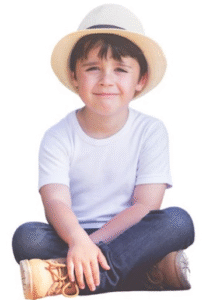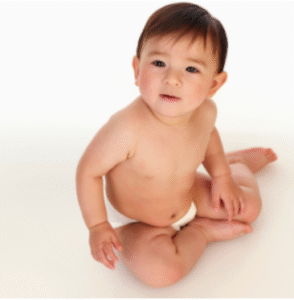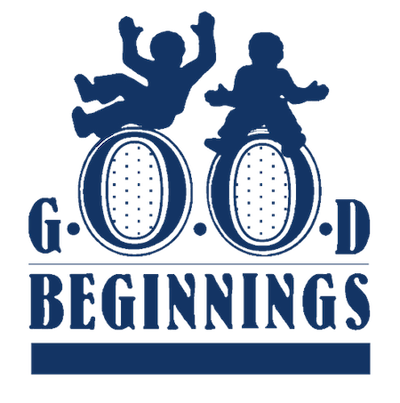As a new parent, you’ll encounter many terms while learning about your child’s development—and one of those may be W-sitting. This is a sitting position where a child’s bottom is on the floor with their knees bent and legs splayed out to the sides, forming a “W” shape when viewed from above. Our pediatric physical therapists are frequently asked the question above and want to share their wisdom with you!
While it’s common for young children to use the position as a transition between others, or as a brief rest option, it is something to be discouraged for prolonged sitting and play. Here’s why:

Why W-Sitting Isn’t Ideal
-
May Limit Flexibility and Range of Motion
Prolonged W-sitting can cause tightness in the hip muscles and hamstrings. It also makes it harder for your child to rotate their trunk, which is important for movements like reaching across the body during play.
-
Reduces Core Strength Development
Because the legs provide a wide, stable base in W-sitting, children don’t have to use their core muscles while here. This is the time when children need to grow and challenge their muscles; build endurance and learn how to reach without falling. W-sit locks them into a position where they can’t even move enough to try-and core muscle development is limited, affecting future skill development.
-
Limits Ability to Change Positions
Sitting is one of many skills that need to be mastered before the long term goal of walking. It is also very important for the child to learn to control the movement BETWEEN sitting, crawling, and standing. The skill called a “pre-vault” is essential for development-and unable to be achieved while w-sitting.
-
Affects Lower Body Alignment
W-sitting places the hips in an internally rotated position. This can contribute to poor alignment of the knees and feet and may increase the likelihood of toeing-in (pigeon-toeing) when your child begins to stand or walk.
What Are Better Sitting Positions?
Instead of W-sitting, try encouraging these alternatives
• Tailor Sitting (“Criss-Cross Applesauce”)
This common sitting position, with legs crossed in front, helps open the hip joints and encourages good posture and trunk rotation.
Ring Sitting
Similar to tailor sitting, but with feet uncrossed and legs forming a loose circle. This is found in the younger children/babies while developing their first year movement skills.
• Side Sitting (“Mermaid sit”)
In this position, both legs are bent and tucked to one side of the body. It’s a great transitional posture for moving into crawling (quadruped) or kneeling and helps promote mobility and trunk control. Just make sure that your child explores both sides, not just one.
Final Thoughts
W-sit is not meant to be a position of play-but it is okay if your child uses it for moments of rest or during transitions during play. If your child chooses w-sit frequently, we recommend teaching them to change to one of the positions listed above. If this continues to be an on-going challenge, whether the sitting itself, movement challenges from w-sitting, or challenges with walking, our pediatric physical therapists are always here to help!
References
-
Salls, J. S., Silverman, L. N., & Gatty, C. M. (2002). The relationship between postural stability and gross motor skills in young children. Physical & Occupational Therapy in Pediatrics, 22(1), 63–84.
-
Pathways.org. (n.d.). Why W-Sitting Is Not Recommended
American Academy of Pediatrics. (2013). Caring for Your Baby and Young Child: Birth to Age 5. Bantam Books









